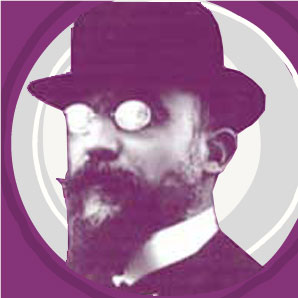Erik Satie Biography - A Very Quick Guide
Artist:
Erik Satie
Born:
1866, Honfleur
Died:
1925, Paris
Erik Alfred Leslie Satie was born on May 17, 1866, in Honfleur in the Normandy region of France. He became known as both a composer and a pianist, performing mostly in cafés and cabarets. Over the course of his career he wrote music for the theatre and ballet, along with a substantial body of piano works.
Satie’s compositions are marked by their originality, wit, eccentricity, and striking simplicity, rejecting the emotional excesses of Romanticism.
Satie eventually emerged as a central figure in the French avant-garde, though he was not taken seriously by his contemporaries until he reached his forties. A turning point came in 1917 with the Paris premiere of Parade, a ballet whose score famously included parts for typewriter, foghorn, and various noise-makers. Created in collaboration with Jean Cocteau and Pablo Picasso for Sergei Diaghilev’s Ballets Russes, Parade caused a scandal that helped establish Satie’s reputation.
Many of his piano pieces carry whimsical titles such as Trois morceaux en forme de poire (Three pieces in the shape of a pear), Genuine Flabby Preludes (for a dog), and unpleasant glimpses. His scores are also filled with playful written instructions aimed at performers - though he was adamant that these remarks should not be spoken aloud in concert.
Satie was famously eccentric. He lived in the Paris suburb of Arcueil and reportedly walked across the entire city to Montmartre or Montparnasse and back every day. He also founded his own private “church,” of which he was the sole member.
He counted Debussy and Ravel among his friends, and although he was never a popular celebrity, he exerted a strong influence on younger musicians. He became a guiding inspiration for the group later known as Les Six - Auric, Durey, Honegger, Tailleferre, Milhaud, and Poulenc - who championed clarity, simplicity, and a rejection of the dominant styles of the time, including Impressionism, Russian primitivism, and post-Wagnerian expressionism.
Erik Satie died on July 1, 1925, and was buried in the cemetery at Arcueil. His music and his eccentric personality continue to fascinate and inspire artists around the world.
Satie’s compositions are marked by their originality, wit, eccentricity, and striking simplicity, rejecting the emotional excesses of Romanticism.
Satie eventually emerged as a central figure in the French avant-garde, though he was not taken seriously by his contemporaries until he reached his forties. A turning point came in 1917 with the Paris premiere of Parade, a ballet whose score famously included parts for typewriter, foghorn, and various noise-makers. Created in collaboration with Jean Cocteau and Pablo Picasso for Sergei Diaghilev’s Ballets Russes, Parade caused a scandal that helped establish Satie’s reputation.
Many of his piano pieces carry whimsical titles such as Trois morceaux en forme de poire (Three pieces in the shape of a pear), Genuine Flabby Preludes (for a dog), and unpleasant glimpses. His scores are also filled with playful written instructions aimed at performers - though he was adamant that these remarks should not be spoken aloud in concert.
Satie was famously eccentric. He lived in the Paris suburb of Arcueil and reportedly walked across the entire city to Montmartre or Montparnasse and back every day. He also founded his own private “church,” of which he was the sole member.
He counted Debussy and Ravel among his friends, and although he was never a popular celebrity, he exerted a strong influence on younger musicians. He became a guiding inspiration for the group later known as Les Six - Auric, Durey, Honegger, Tailleferre, Milhaud, and Poulenc - who championed clarity, simplicity, and a rejection of the dominant styles of the time, including Impressionism, Russian primitivism, and post-Wagnerian expressionism.
Erik Satie died on July 1, 1925, and was buried in the cemetery at Arcueil. His music and his eccentric personality continue to fascinate and inspire artists around the world.
Top Pieces on 8notes by Erik Satie
